Last updated on
Discover the ideal number of drawers for a well-organized and functional kitchen in this informative guide.
The kitchen is the heart of any home, and it’s where we spend a lot of our time cooking, eating, and entertaining. One of the most important elements of a kitchen is storage space – after all, you need somewhere to keep all those pots, pans, dishes, and utensils! When it comes to storage in the kitchen, drawers are an essential feature.
But how many drawers should your kitchen have? In this article, we’ll explore the answer to that question and provide some helpful tips for optimizing your kitchen’s storage capacity. So let’s dive in!
What's Inside
Assessing Your Kitchen Space
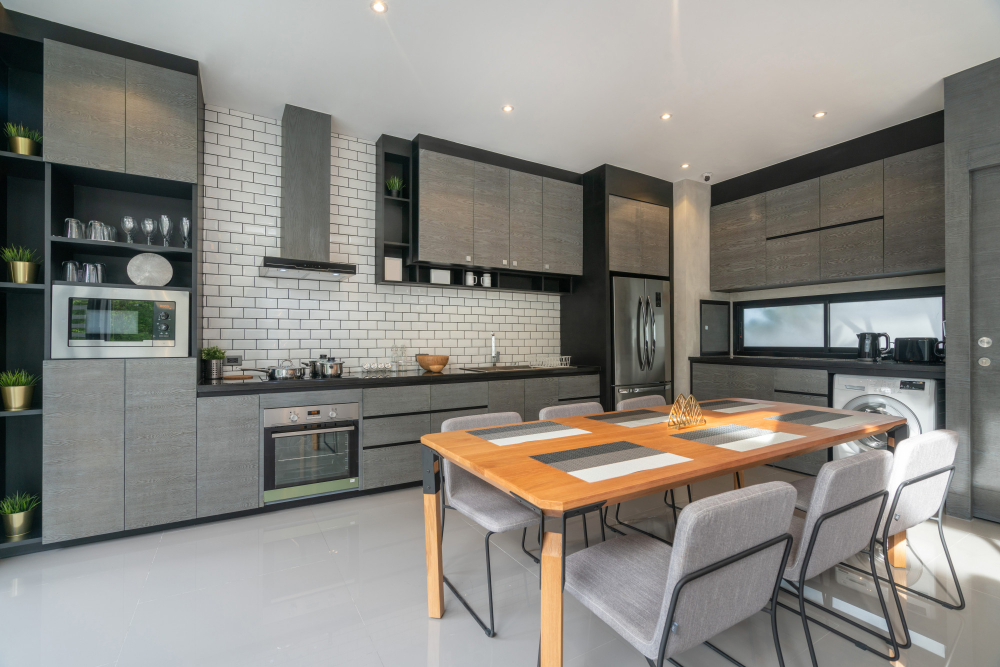
Take a good look at your kitchen and consider how much storage space you currently have and where it is located. Are there any areas that are underutilized or could be better organized? Do you have enough counter space for food preparation? These are all essential questions to ask yourself before deciding on the number of drawers needed in your kitchen.
Consider the layout of your cabinets, appliances, and countertops when assessing how many drawers will fit comfortably in each area. You don’t want too many or too few; finding a balance is key! Keep in mind that some items may require more drawer depth than others – for example, pots and pans need deeper drawers than utensils.
Once you’ve assessed your current storage situation, take note of what works well for you and what doesn’t.
Determining Storage Needs
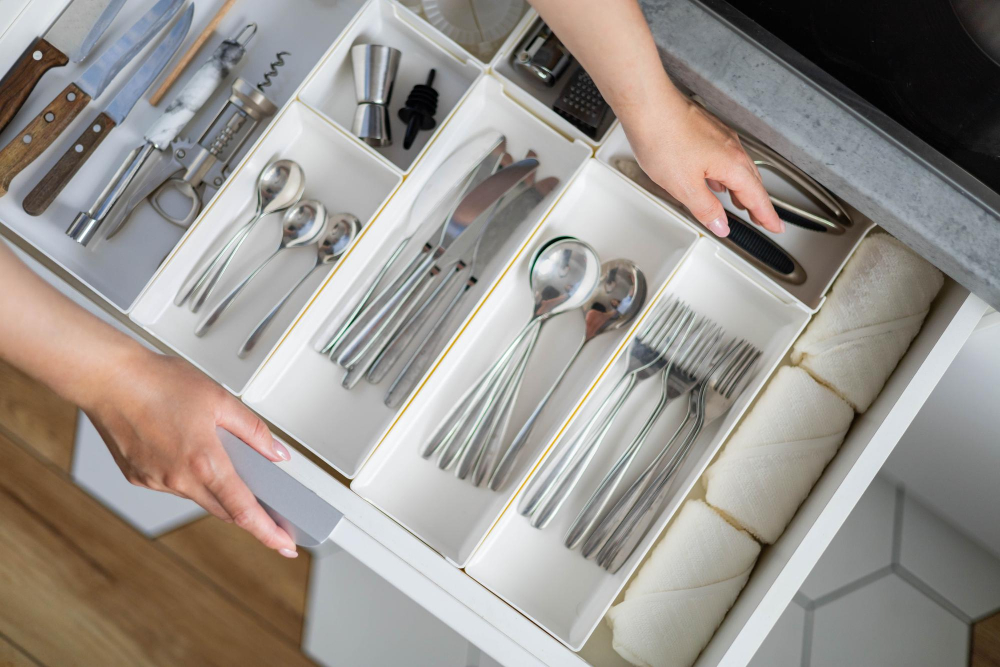
This will depend on a variety of factors, including the size of your household and how often you cook at home. If you have a large family or frequently entertain guests, for example, then you’ll likely need more storage space than someone who lives alone and eats out most nights.
To get an accurate idea of your storage needs, take inventory of all the items in your kitchen that require storage – from pots and pans to utensils and small appliances. Consider which items are used most frequently versus those that are only needed occasionally.
Once you’ve taken stock of what needs storing in the kitchen area based on frequency usage; consider other areas where additional drawer spaces may be required such as pantry or dining room cabinets if they exist within reach from the cooking area.
Assess Your Household Needs

Consider how many people live in your home and how often you cook. Do you entertain frequently? Do you have a large family or host dinner parties regularly? These are all factors that will influence the amount of storage space required.
If you’re someone who loves to cook and bake, then having more drawers for storing utensils, baking sheets, pots and pans is crucial. On the other hand, if cooking isn’t a priority for you or if there are only one or two people living in your home with minimal entertaining needs – fewer drawers may suffice.
It’s also important to consider any specific dietary requirements that may require additional storage space such as gluten-free ingredients needing separate containers from regular flour products.
Take Inventory of Your Kitchen
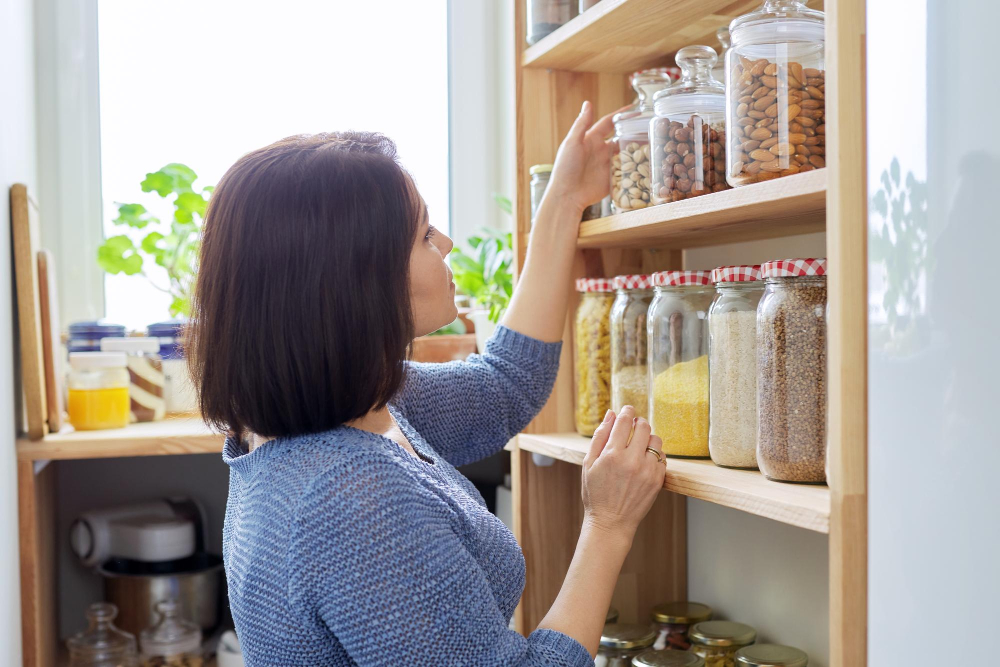
This step is crucial in determining the number and types of drawers that will work best for your needs. Begin by going through all the items in your kitchen, including cookware, utensils, dishes, and food items.
Take note of how often each item is used and which ones are seasonal or rarely used.
Once you’ve taken stock of everything in your kitchen space, consider grouping similar items together based on their function or frequency of use. For example: keep baking sheets near the oven; store pots and pans close to the stove; place frequently-used utensils within easy reach.
Declutter Your Belongings
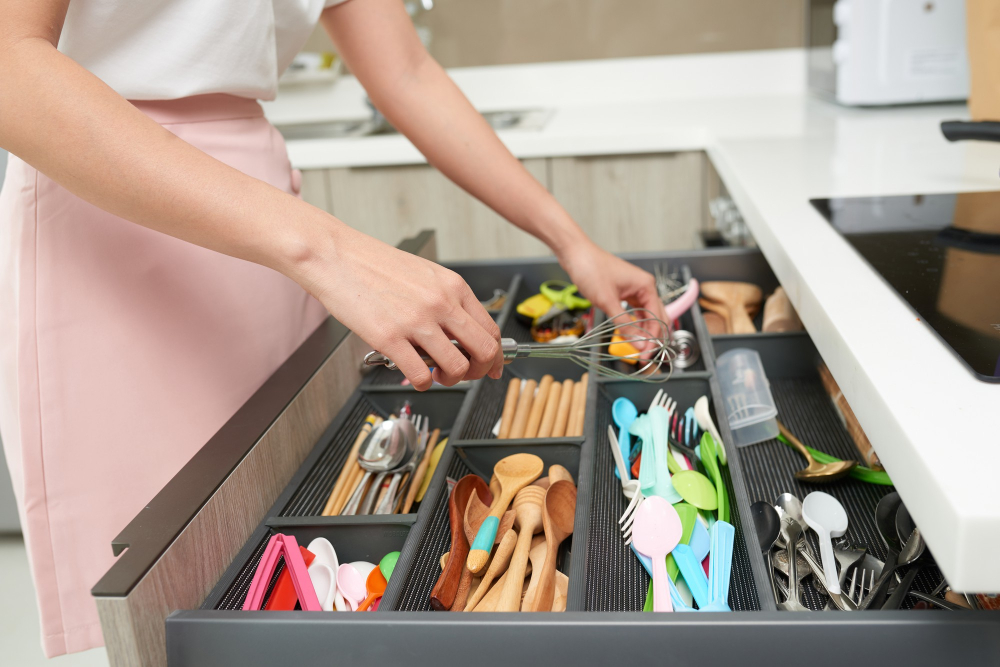
Take a look at everything in your kitchen and decide what you really need and use regularly. Get rid of any items that are broken, outdated or no longer serve a purpose.
It can be challenging to let go of things we’ve accumulated over time, but getting rid of unnecessary items will make it easier for you to organize the remaining ones effectively. You’ll also have more space in your drawers for the things that matter most.
Start by emptying out each drawer one at a time and sorting through its contents. Create piles for items that belong together or those that should be thrown away/donated/sold/given away/kept elsewhere in the house.
Once you’ve sorted through all of your belongings, take some time to clean out each drawer before putting anything back inside them again.
Organize the Kitchen Based On Functional Areas
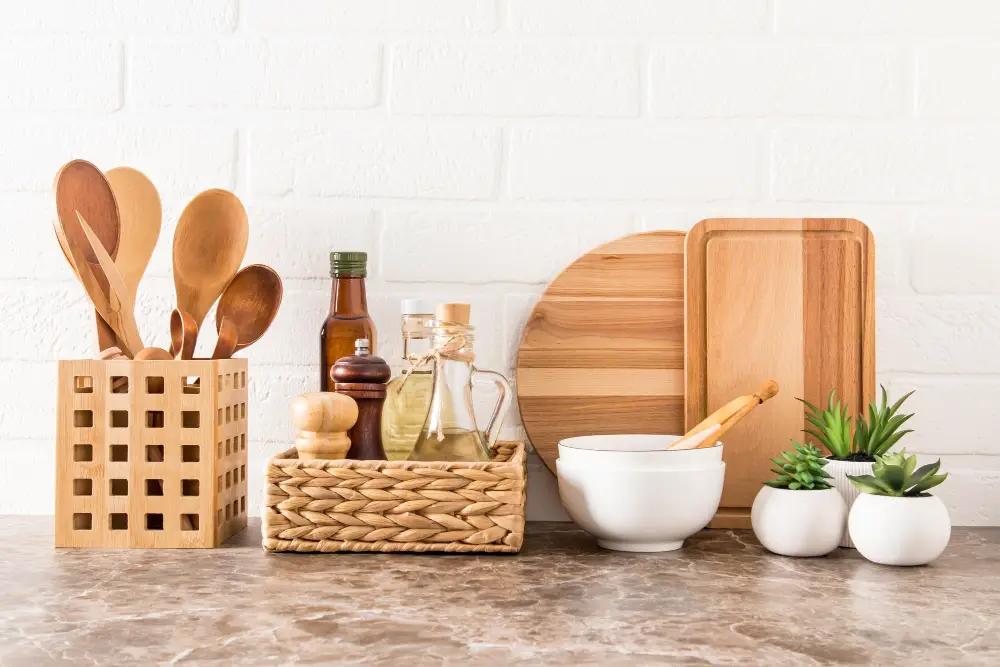
This means creating designated areas for cooking utensils, baking supplies, food storage containers and lids, and so on. By doing this you can easily find what you need when preparing meals or cleaning up afterward.
Start by taking inventory of all the items in your kitchen that require drawer storage. Then consider how often each item is used and where it would be most convenient to access from while working in the kitchen.
For example, if you frequently bake cakes or cookies then having a dedicated drawer for measuring cups/spoons and mixing bowls near your oven will make things easier for you as opposed to storing them far away from where they are needed.
Similarly keeping knives close at hand but out of reach of children will ensure safety while also making meal prep more efficient.
Drawer Types and Functions
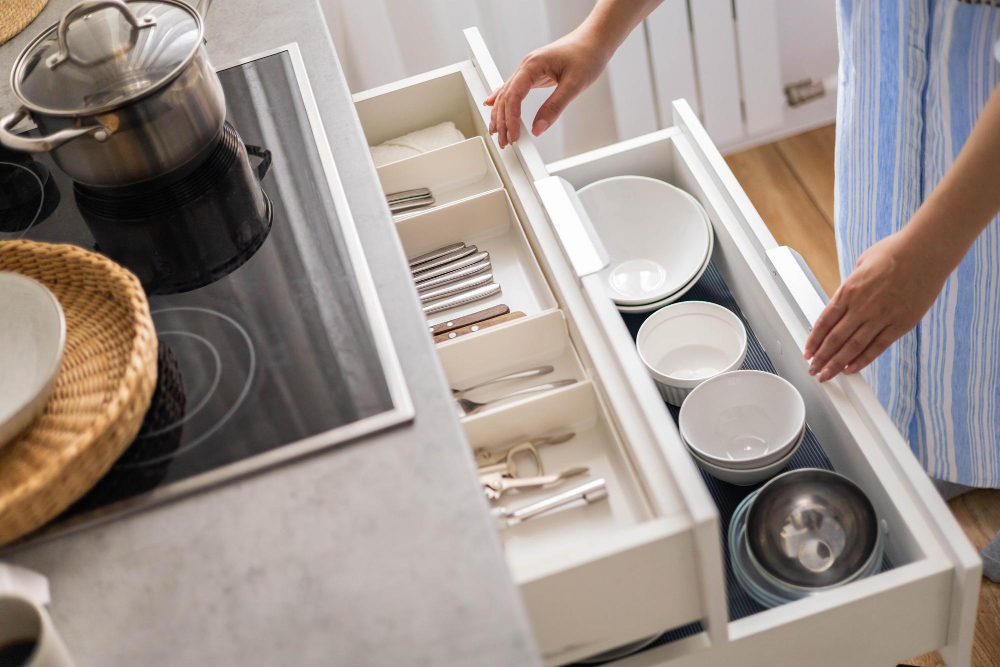
The most common drawer types include base cabinets, wall cabinets, and pantry or tall cabinets. Base cabinet drawers are typically located beneath the countertop and can be used for storing pots, pans, dishes or utensils.
Wall cabinet drawers are installed above the countertop level and can be used for storing smaller items such as spices or cooking oils.
Pantry or tall cabinet drawers provide additional storage space that is ideal for larger items like baking sheets or small appliances like blenders. These taller units often feature pull-out shelves that make accessing stored items easier.
In addition to these basic drawer types, there are also specialized options available such as corner unit carousels which maximize hard-to-reach spaces in your kitchen layout.
Maximizing Drawer Efficiency
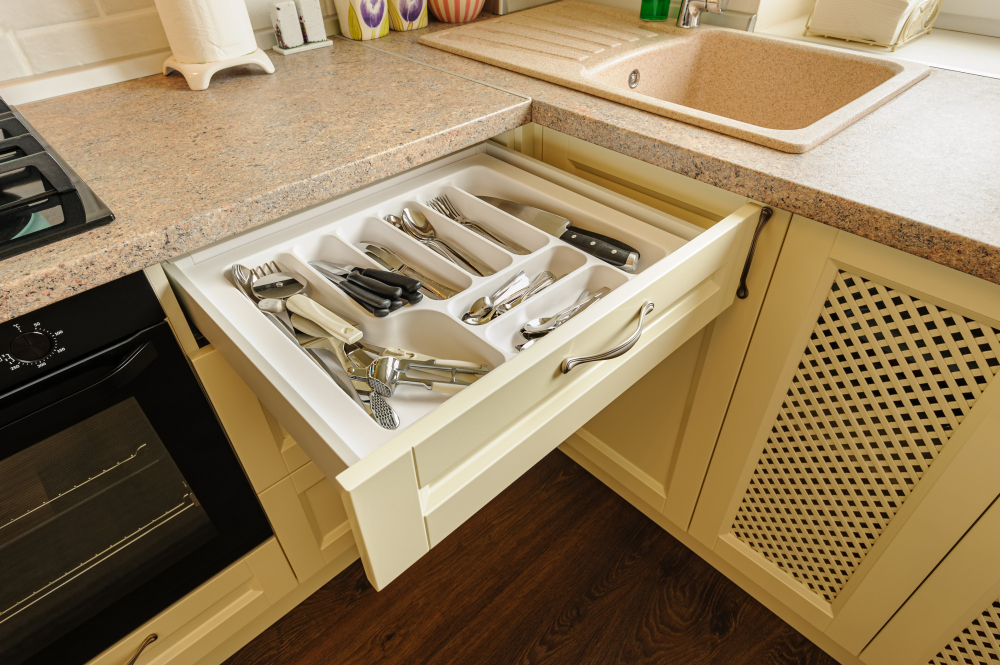
One way to do this is by using drawer dividers and organizers. These can be purchased or custom-made based on your specific needs.
For example, if you have a lot of utensils, consider getting a divider that separates them into different compartments based on type (e.g., spoons in one section and forks in another). This will not only keep everything organized but also make it easier for you to find what you need quickly.
Another option is using inserts specifically designed for storing pots and pans. These inserts come with adjustable dividers that allow you to customize the space according to the size of each pot or pan.
You can also use drawer liners made from non-slip materials such as rubber or silicone. They prevent items from sliding around when opening and closing drawers while protecting both the contents inside and bottom surface of drawers themselves.
Minimizing Clutter in Drawers
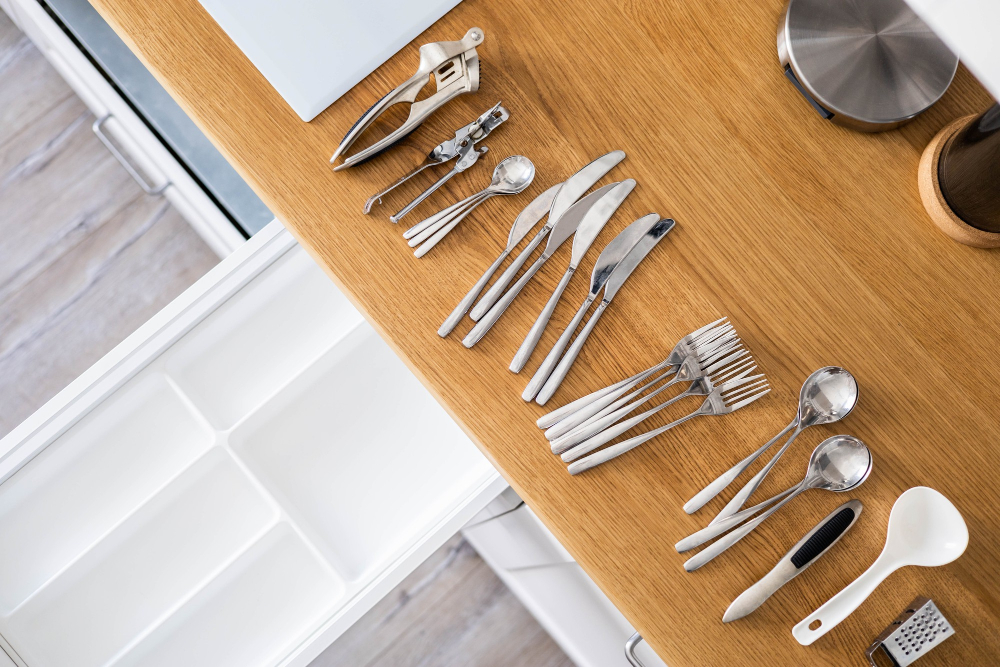
A cluttered drawer can make it difficult to find what you need quickly, leading to frustration and wasted time. To minimize clutter in your drawers, start by decluttering regularly.
Get rid of items that are no longer needed or used frequently.
Next, consider using drawer dividers or organizers for smaller items like utensils or spices. This will help keep everything in its place and prevent things from shifting around when the drawer is opened and closed.
Another way to minimize clutter is by grouping similar items together based on their function or use. For example, designate one drawer for baking supplies like measuring cups and spoons while another holds cooking utensils such as spatulas and tongs.
Be mindful of overfilling drawers with too many items as this can lead to disorganization over time.
Organizational Tools and Inserts

There are many different types of inserts available, from simple dividers to complex systems that can be customized to fit your specific needs. Some popular options include utensil trays, knife blocks, spice racks, and drawer organizers for pots and pans.
When choosing organizational tools for your kitchen drawers, it’s important to consider both function and aesthetics. You want something that will help you stay organized while also looking good in your space.
Look for materials that match or complement the existing finishes in your kitchen.
Another thing to keep in mind is flexibility – choose inserts that can be easily rearranged or removed if needed so you can adjust as necessary over time.
Customization Options for Drawers
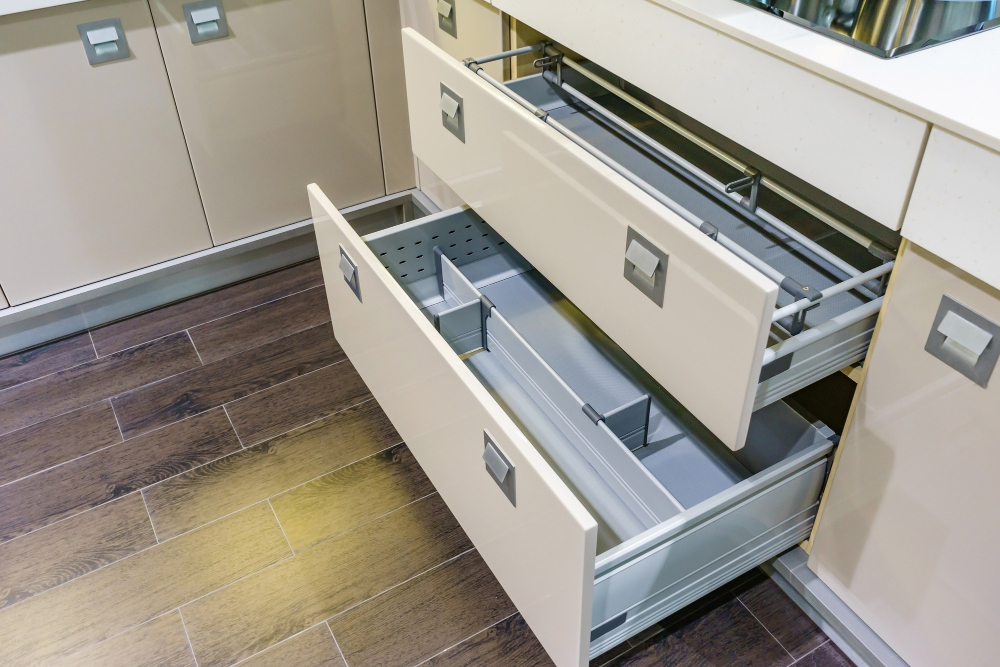
Customizing your drawers can help maximize storage space and make them more functional. There are many ways to customize kitchen drawers, including adding dividers or inserts that create compartments for specific items such as utensils or spices.
Another option is to install pull-out shelves that allow you to access items at the back of a deep drawer without having to reach in and rummage around. You can also add soft-close mechanisms that prevent slamming and reduce wear on the drawer slides over time.
Drawer fronts are another area where customization comes into play. You may choose from various materials like wood, metal, glass or acrylic depending on your style preference and budget constraints.
If you’re looking for something truly unique in terms of design aesthetics then custom-made cabinets with bespoke hardware could be an excellent choice! These cabinets offer endless possibilities when it comes down not only their appearance but also functionality – think about hidden compartments behind false panels or secret sliding doors!
Drawer Material and Design Choices
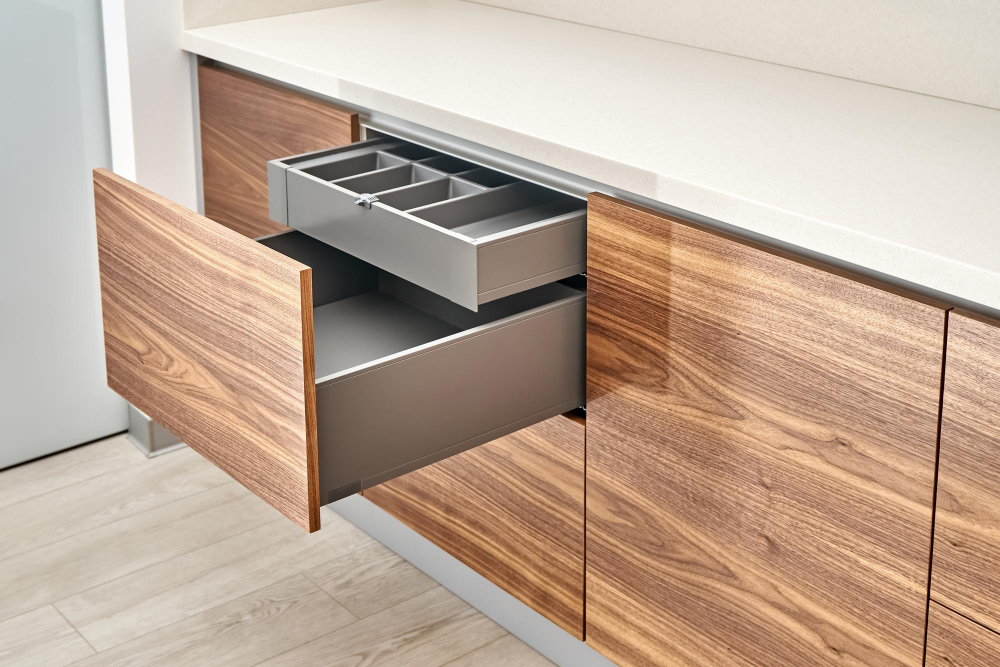
The most common materials used for drawer construction include wood, metal, and plastic. Each has its own advantages and disadvantages in terms of durability, cost-effectiveness, aesthetics, and ease of maintenance.
Wooden drawers offer a classic look that can complement any kitchen style. They are sturdy but may require more upkeep than other materials due to their susceptibility to moisture damage or warping over time.
Metal drawers provide a sleek modern appearance that is easy to clean while being highly durable against wear-and-tear from frequent use.
Plastic drawers are lightweight yet strong enough for everyday use; they come in various colors which make them an excellent choice if you want something fun or colorful in your kitchen decor.
In addition to material choices when selecting drawer designs there’s also the option between traditional side-mounted slides versus undermount slides which allow full access into the back corners of cabinets with no obstructions from hardware on either side.
Installation Tips and Tricks
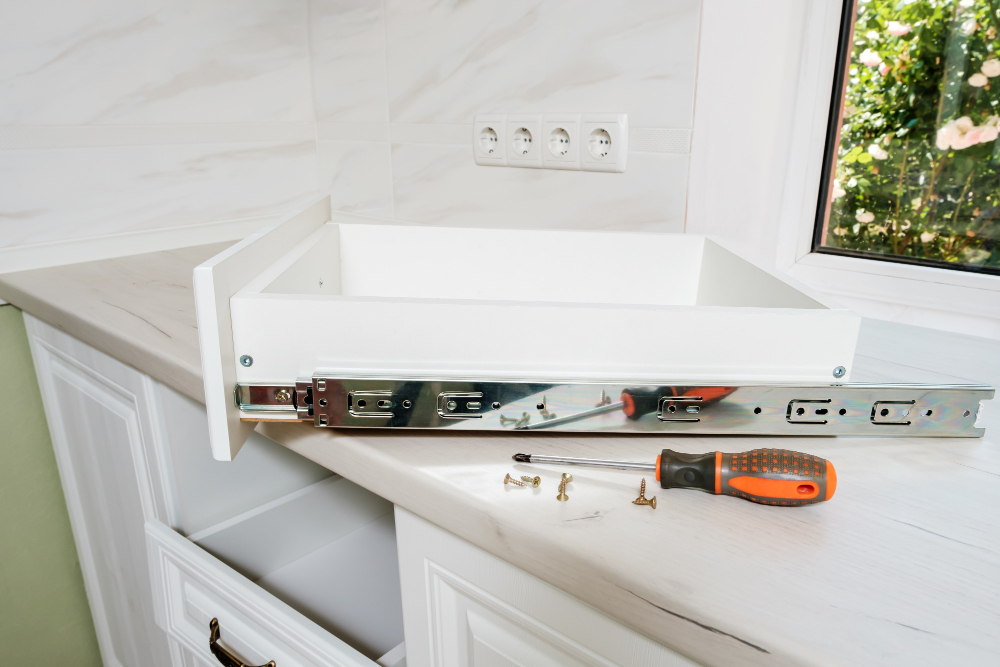
First, be sure to measure your space accurately before purchasing any drawers or cabinets. This will help ensure that everything fits properly once you start installation.
Next, consider using drawer slides with soft-close mechanisms for added convenience and safety. These types of slides prevent slamming and reduce wear-and-tear on the drawer over time.
Another helpful tip is to install full-extension drawer slides whenever possible. This allows you to fully access all items in the back of the drawer without having to reach or strain awkwardly.
Don’t forget about proper alignment during installation – this can make a big difference in how smoothly your drawers operate over time! Use a level tool when installing both horizontal and vertical components of your cabinetry system for optimal results.
The Importance of Ergonomics
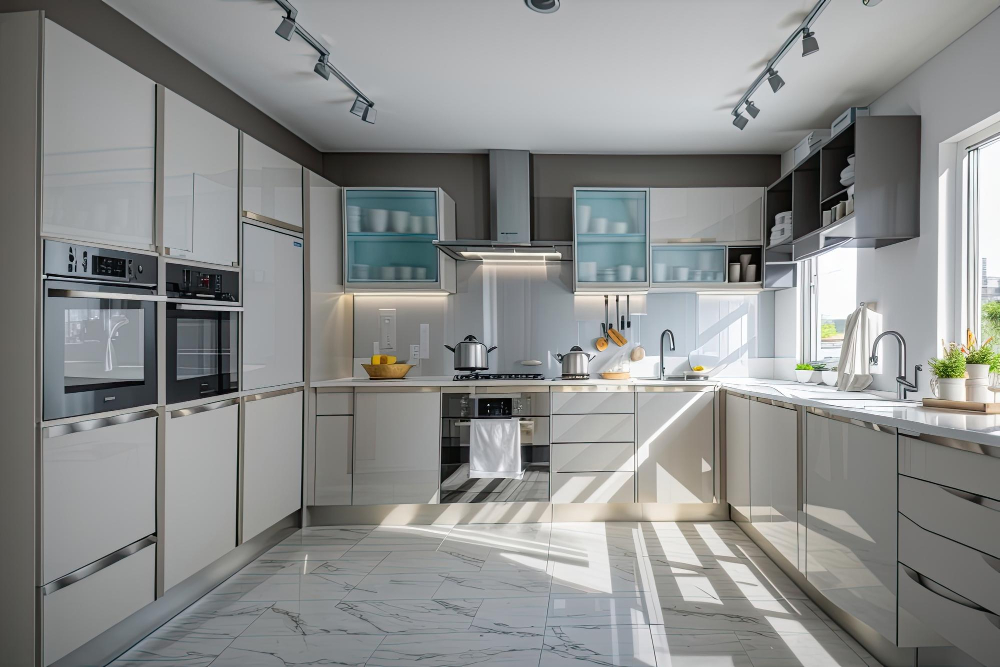
Ergonomics refers to the study of how people interact with their environment and equipment in order to optimize comfort, safety, and efficiency. In the context of kitchen drawers, this means ensuring that they are designed in such a way as to minimize strain on your body while you use them.
For example, if you frequently use heavy pots or pans when cooking on your stove top, it’s important that these items be stored in lower drawers so that you don’t have to lift them up high or bend down too far when retrieving them. Similarly, if you have limited mobility or strength due to age or injury (or simply prefer not having to reach too far), consider installing pull-out shelves instead of traditional drawers for easier access.
By taking into account ergonomic principles when designing your kitchen storage solutions – including drawer placement and height -you can help prevent unnecessary strain on your back muscles while also making sure everything is within easy reach whenever needed.
Safety Considerations in Drawer Design

After all, you don’t want anyone getting hurt while reaching for a pot or pan! There are several key safety considerations to keep in mind when designing your kitchen drawers.
Firstly, make sure that the drawer slides are sturdy and can support the weight of whatever items you plan on storing inside. Weak or flimsy slides can cause the drawer to tip over or collapse under heavy loads.
Secondly, consider installing soft-close mechanisms on your drawers. These mechanisms prevent them from slamming shut and potentially injuring someone’s fingers.
Thirdly, ensure that any sharp objects such as knives are stored safely away from curious children by using childproof locks if necessary.
Think about where you place your heavier items within each drawer – try not to store them too high up where they could fall out easily and cause injury.
Maintenance and Cleaning
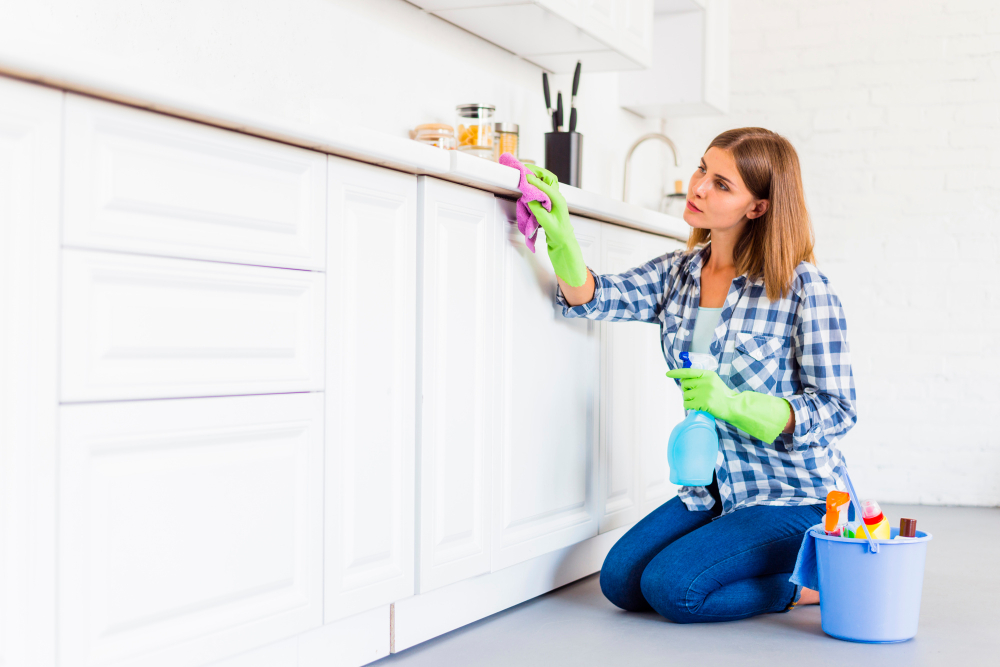
Regular maintenance and cleaning will help ensure that your drawers remain functional for years to come. Here are some tips for keeping your kitchen drawers in top condition:
1. Wipe down the interior of each drawer with a damp cloth or sponge on a regular basis.
2. Avoid using harsh chemicals or abrasive cleaners, as these can damage the finish of the drawer.
3. If you spill something inside a drawer, clean it up immediately to prevent staining or odors from setting in.
4. Check all hardware regularly (such as knobs and handles) to make sure they’re secure and functioning properly.
5. Lubricate any moving parts (such as slides) with silicone spray lubricant every six months or so to keep them working smoothly.
Updating and Replacing Drawers

First, think about the style of your kitchen and what type of drawer design would complement it best. You may want to choose a material that matches your existing cabinetry or opt for something different for contrast.
Next, consider the functionality of the drawers themselves. Are they easy to open and close? Do they provide enough storage space? If not, you may want to look into customizing them with inserts or dividers.
Don’t forget about safety considerations when updating or replacing drawers. Make sure any new hardware is securely installed and won’t pose a hazard in terms of sharp edges or loose parts.
Consult a Kitchen Designer

A designer can help assess your needs and provide expert advice on the best drawer configurations for your specific situation.
A good designer will take into account not only the size of your kitchen but also its layout and traffic flow. They’ll work with you to determine what items need to be stored in each drawer and where those drawers should be located for maximum efficiency.
They can recommend custom solutions that fit perfectly within the dimensions of your cabinets while providing optimal functionality. With their expertise in materials, finishes, hardware options as well as design trends; they can guide you through every step of creating an organized and functional space that meets all of yours needs.
FAQ
Is it better to have more drawers or cabinets?
Considering cabinets provide more storage and are better for stacking crockery, it is better to have more cabinets than drawers.
How many cupboards and drawers in a kitchen?
In a kitchen, the ideal number of cupboards is two for each adult and one for everyone else, while drawers are recommended for easier access and better organization.
What is the best layout for kitchen items?
The best layout for kitchen items is to keep cooking and baking pieces near the food preparation area, utensils in the nearest drawer, glassware close to the sink or refrigerator, and create a coffee or tea station near the water source.
Where do you put kitchen drawers?
Place kitchen drawers next to the range for pans and utensils, in the kitchen island for glassware, near a clear countertop for chinaware, and away from the main cooking area for cutlery and glassware.
What factors should be considered when deciding the number of drawers and cabinets in a kitchen?
When deciding the number of drawers and cabinets in a kitchen, consider factors such as available space, storage needs, budget, and design preferences.
How can drawer organizers improve the functionality of a kitchen?
Drawer organizers can improve the functionality of a kitchen by providing efficient storage and organization for utensils and other items, making them easily accessible and well-arranged.
How do different kitchen styles influence the preference for drawers or cabinets?
Different kitchen styles influence the preference for drawers or cabinets based on factors like aesthetics, functionality, and storage requirements.




